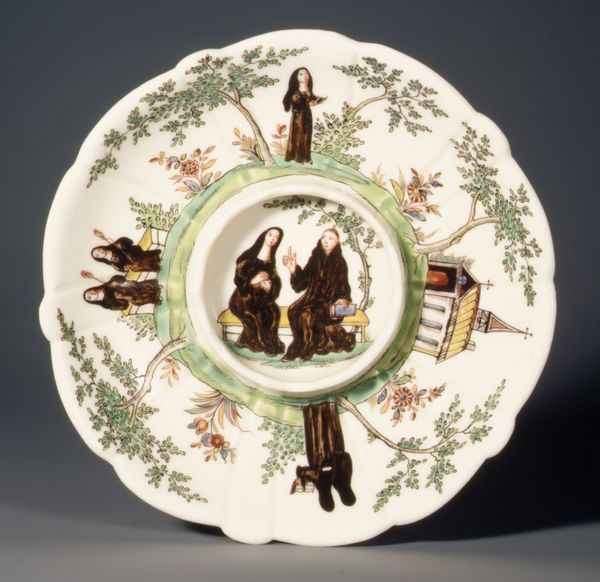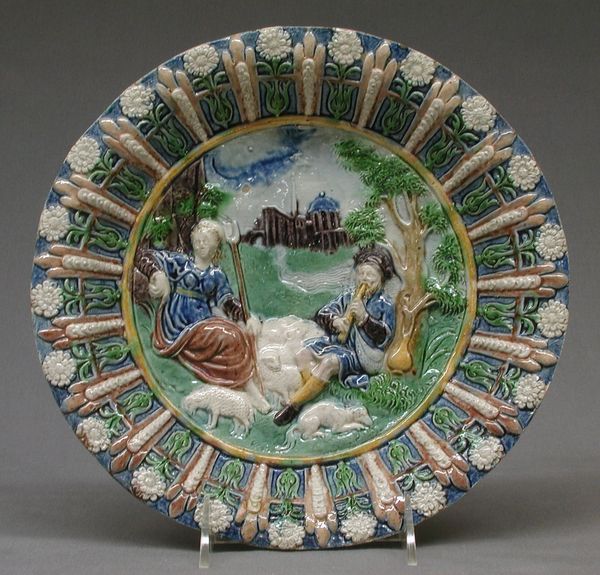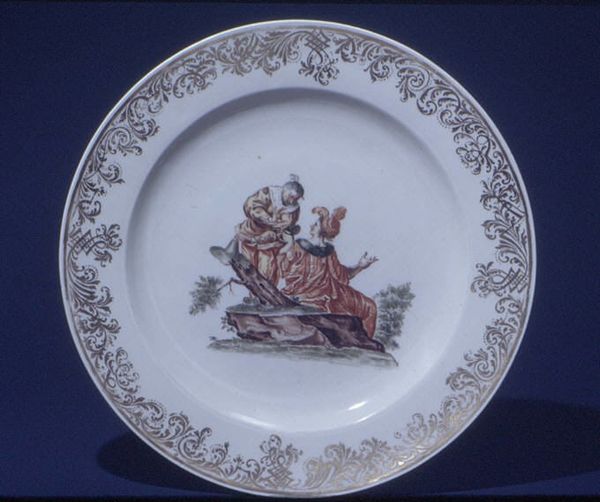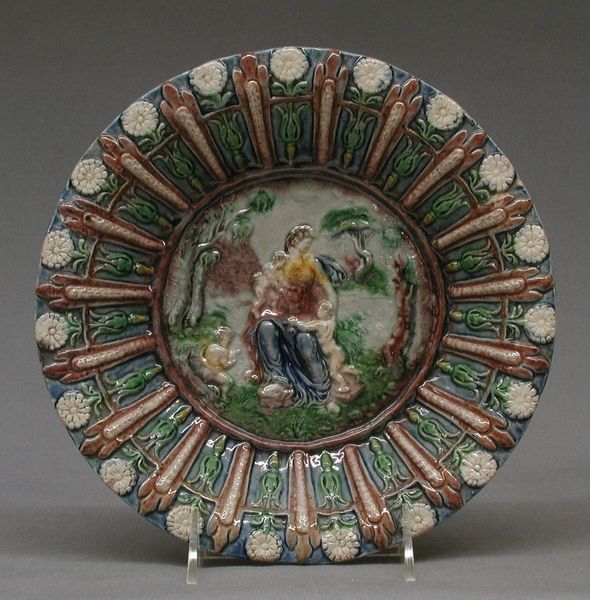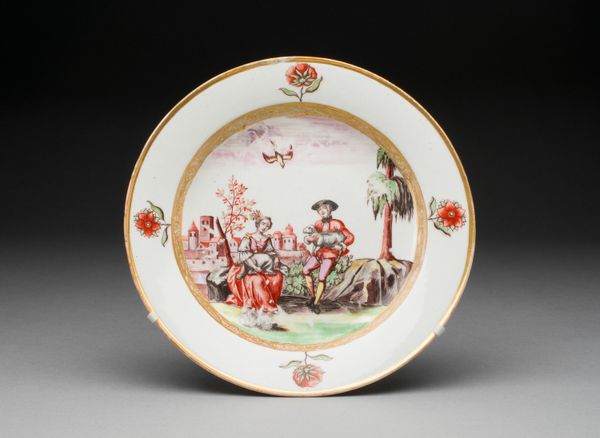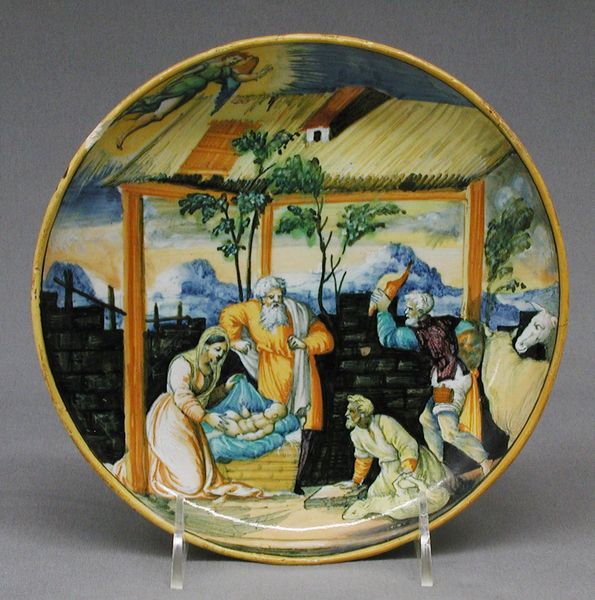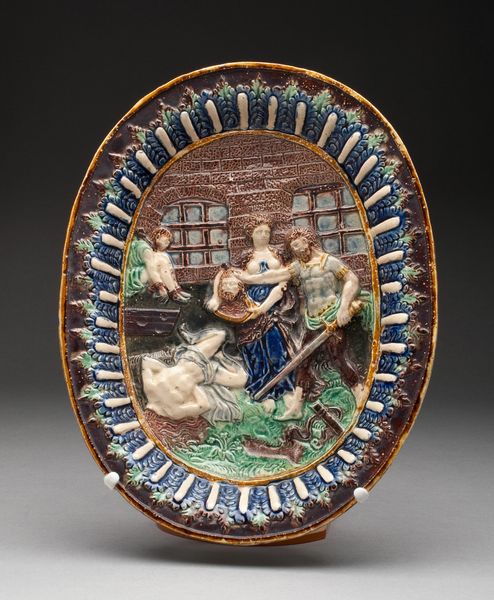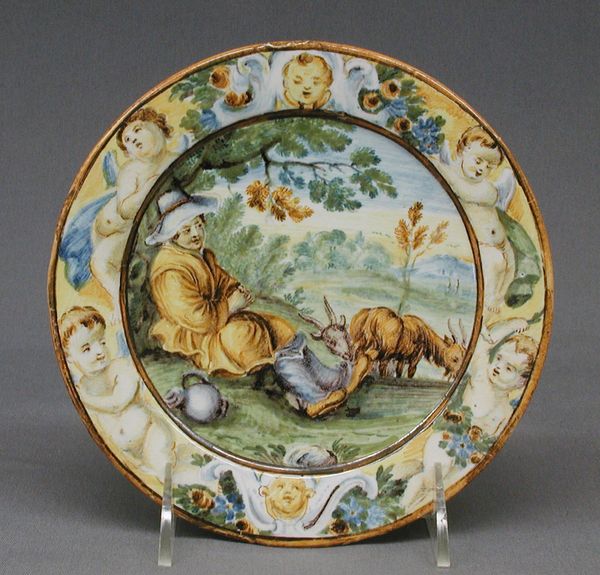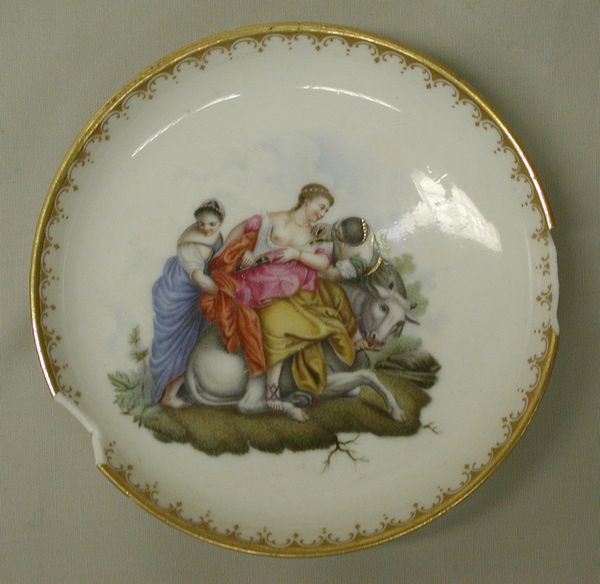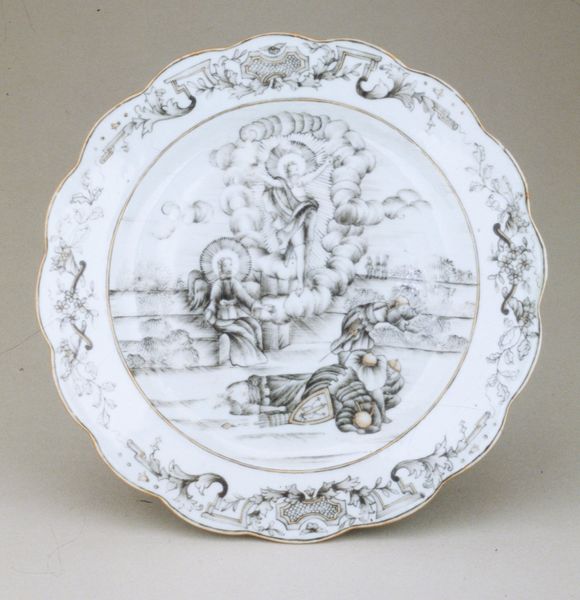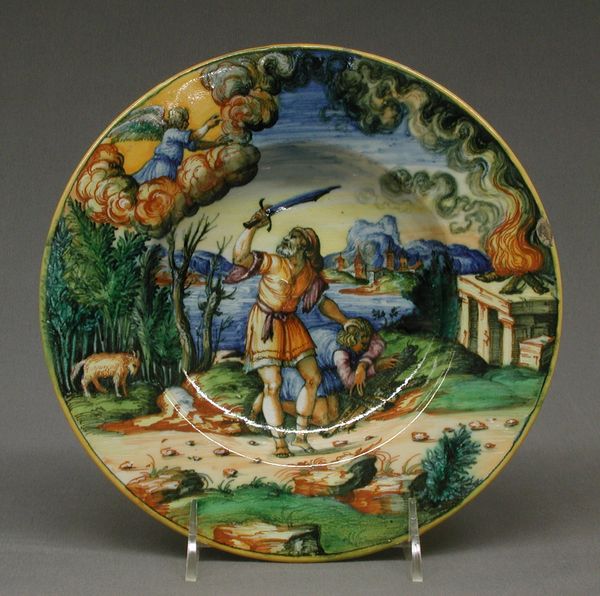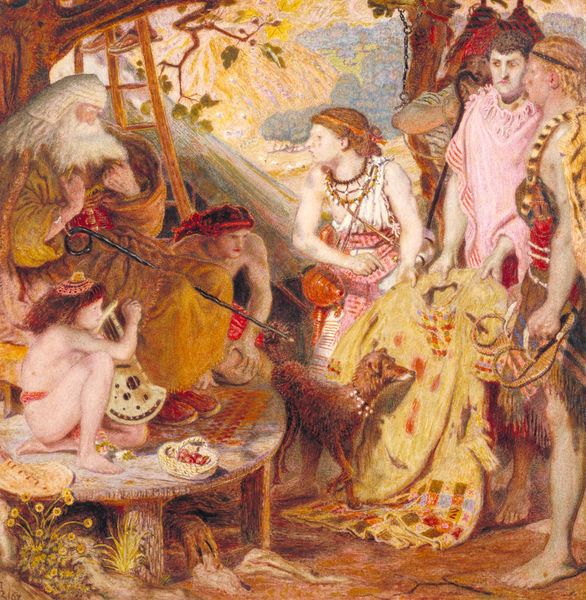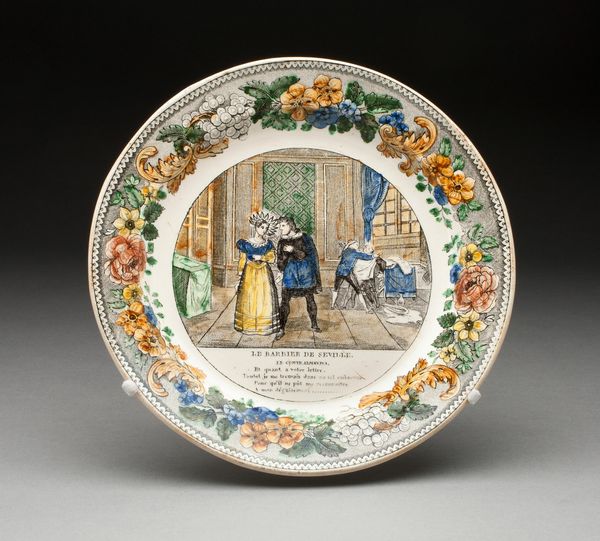
Dimensions: Height: 6 15/16 in. (17.6 cm)
Copyright: Public Domain
The Le Nove Porcelain Manufactory produced this pastoral group, now at the Metropolitan Museum of Art, in porcelain. In eighteenth-century Europe, porcelain was a symbol of luxury and refinement, avidly collected by the aristocracy. Italy, with its rich artistic heritage, was one of the centers of porcelain production. This sculpture, with its idealized vision of rural life, reflects the era's fascination with the pastoral. The figures, elegantly posed, evoke a sense of leisure and harmony with nature, far removed from the harsh realities of peasant life. The sculpture subtly reinforces social hierarchies through its romanticized portrayal of the countryside. The woman reclines with a basket full of eggs. Her delicate features and the presence of a small dog further enhance the scene's artificiality. Understanding this work requires exploring the social history of porcelain production and consumption, as well as the cultural meanings associated with the pastoral in eighteenth-century Italy. Such research can reveal much about the values and aspirations of the society that produced and admired this elegant sculpture.
Comments
No comments
Be the first to comment and join the conversation on the ultimate creative platform.

